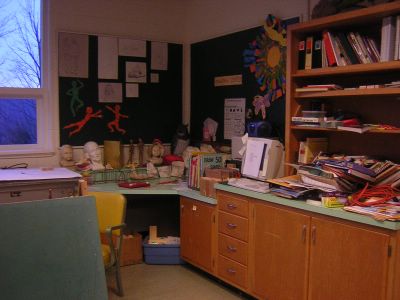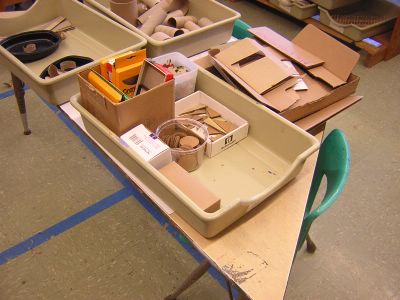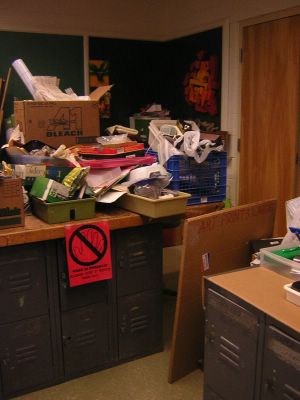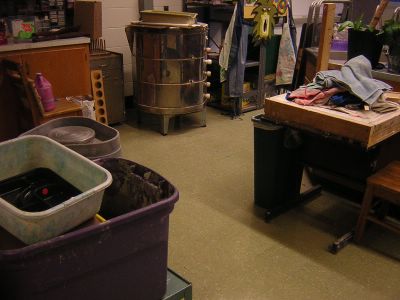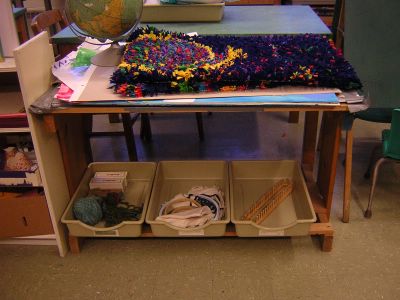So far having centers set up and running. One of most popular centers I have introduced is the Construction Center. The preschoolers have been practicing how to saw and hammer safely with safety rules they must follow (with safety goggles and adult staff supervision). They just love to hammer away those nails on wooden scraps. I should be getting a huge stand-alone tree stump installed in my art room for nail-driven practices. Great for practicing hands-eyes coordinations and gross motor skills; early safety training skills with respect to tools' handling and putting these away. The elementary students, especially the boys!, are into creating a birdhouse, a sitting skateboard, a dance house, and a mysterious wooden sculpture yet to be determined. A pair of high school boys are building a World Trade Center model with recycled materials, which require their independent critical thinking and problem-solving skills.
Fiber Art Center is the second popular one. The preschoolers and elementary students are not yet interested to it. The middle and high school transition (special needs) students are into circular weaving on pizza rounds and with old telephone cables and yarns. Two different rug hooking projects shared the same rug frame setup, are work in progress: first is with oxford punch needle and yarns; and other one is with a rug hook and precut skinny fabric strips.
Painting Center is next doing on 2D and 3D surfaces. All levels of learning are attracted to this center.
Clay Center has sort of quiet down after excitement playing with wet clays and plenty of pieces were made: lizard bowl, hearts, star-patterned bowl, basketball, hand-built bowls. Few high school students experiment with the electric pottery wheel. All half-hour classes were not permitted to use the whell because time is too short and needs my 1:1 instructional guidances.
As of this week, I am getting the digital pixes of students' works and mounting them for the upcoming NAEA event in Boston during March 4-8, 2005. These will be exhibit along with the other TAB colleagues' student artworks as well at the Massachusett College of Arts's Anhiem Gallery. Whoever reads this should come and see the students' works from our choice-based art programs, then!
Happy Valentine!



